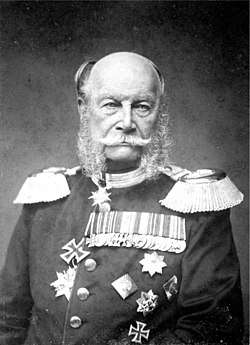Year of the Three Emperors

Kaiser Wilhelm I was in charge of Germany 18 January 1871 – 9 March 1888.

Kaiser Frederick III was in charge for only 99 days during the Year of Three Emperors (9 March – 15 June 1888).

Kaiser Wilhelm II was in charge 15 June 1888 – 9 November 1918.
The Year of the Three Emperors, or the Year of the Three Kaisers, (German: [Dreikaiserjahr] Error: {{Lang}}: text has italic markup (help)) refers to the year 1888 during the German Empire in German history.[1][2][3][4] The year is important because two German Emperors, or Kaisers, died. This meant that there were three emperors in a year..[1] The three emperors who ruled Germany during this year were Wilhelm I, Frederick III and Wilhelm II. The mnemonic “drei Achten, drei Kaiser” (English: "three eights, three emperors") is still used today in Germany to remember which year it was.[5]